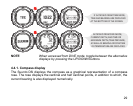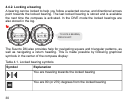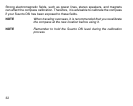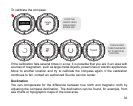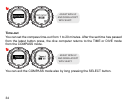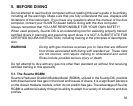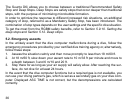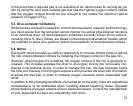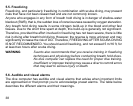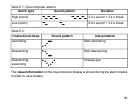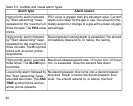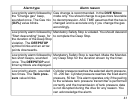The Suunto D6i allows you to choose between a traditional Recommended Safety
Stop and Deep Stops. Deep Stops are safety stops that occur deeper than traditional
stops, with the purpose of minimizing microbubble formation.
In order to optimize the response to different increased risk situations, an additional
category of stop, referred to as a Mandatory Safety Stop, has been introduced. The
combination of stop types depends on the user settings and thespecific dive situation.
To get the most from the RGBM safety benefits, refer to Section 5.9.10. Setting the
deep stops and Section 5.12. Deep stops.
5.2. Emergency ascents
In the unlikely event that the dive computer malfunctions during a dive, follow the
emergency procedures provided by your certified dive training agency or, alternatively,
follow these steps:
1.
Assess the situation calmly and then move promptly to less than 18 m/60 ft.
2.
At 18 m/60 ft, slow down your ascent rate to 10 m/33 ft per minute and move to
a depth between 3 and 6 m/10 and 20 ft.
3.
Stay there for as long as your air supply will safely allow. After reaching the sur-
face, do not dive for at least 24 hours.
In the event that the dive computer functions but a required gas is not available, you
can use your diving partner's gas, which is set as a secondary gas on your dive com-
puter. Displayed ASC TIME is not correct, but the decompressions are calculated
correctly.
36




